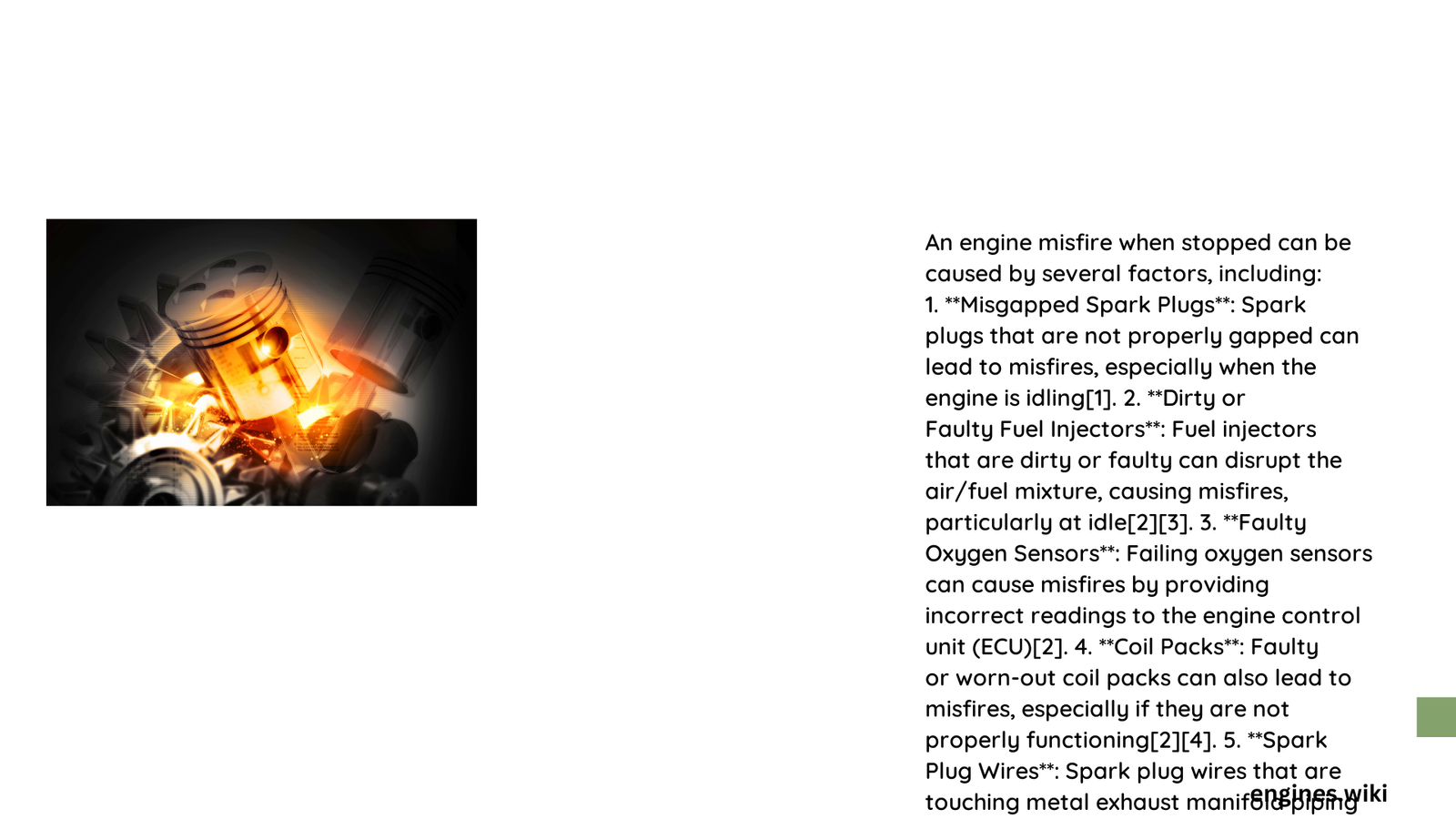Engine Misfire When Stopped: A Comprehensive Technical Analysis
Quick Overview
Vehicle engine misfires when stopped can be complex mechanical issues that compromise performance and potentially lead to significant damage. These intermittent problems often stem from multiple potential sources including ignition system failures, fuel delivery complications, and mechanical wear. Understanding precise diagnostic techniques and systematic troubleshooting approaches is crucial for accurate resolution.
What Causes Engine Misfire at Idle?
Electrical System Failures
- Spark Plug Degradation
- Worn electrode surfaces
- Incorrect gap measurements
- Carbon accumulation
Fuel System Complications
- Injector Performance
- Clogged fuel injectors
- Inconsistent spray patterns
- Electrical connector issues
Diagnostic Workflow for Precise Identification
| Diagnostic Step | Tools Required | Expected Outcome |
|---|---|---|
| Code Retrieval | OBD2 Scanner | Cylinder-specific misfire identification |
| Visual Inspection | Multimeter, Flashlight | Component condition assessment |
| Compression Test | Compression Gauge | Mechanical integrity verification |
How to Perform Systematic Troubleshooting?
Step 1: Initial Diagnostic Scan
- Connect professional-grade OBD2 scanner
- Retrieve specific misfire codes (P0300-P0306)
- Analyze freeze frame data
- Check pending and historical codes
Step 2: Visual Component Examination
- Inspect spark plug condition
- Check ignition coil integrity
- Examine electrical connections
- Verify vacuum line conditions
Step 3: Advanced Diagnostic Techniques
- Utilize lab oscilloscope
- Perform cylinder balance test
- Conduct fuel pressure analysis
- Evaluate ignition system performance
Potential Repair Solutions
Cost-Effective Interventions
– Spark plug replacement ($10-$30 per plug)
– Ignition coil swap ($50-$200)
– Fuel injector cleaning ($100-$300)
Complex Repair Scenarios
– Cylinder head reconstruction
– Complete valve train assessment
– Engine control module diagnostics
Prevention Strategies
- Regular maintenance schedule
- High-quality fuel usage
- Timely component replacement
- Professional periodic inspections
Technical Specifications to Monitor
- Acceptable Compression Range: 120-180 PSI
- Vacuum Pressure: 17-22 inches Hg
- Idle RPM: 600-1000 (varies by vehicle)
Expert Recommendations
Professionals suggest addressing engine misfires immediately to prevent:
– Catalytic converter damage
– Increased emissions
– Potential engine failure
– Reduced fuel efficiency
Conclusion
Systematic diagnosis, precise measurement, and targeted intervention remain key to resolving engine misfire when stopped. Professional expertise combined with methodical troubleshooting ensures optimal vehicle performance.

